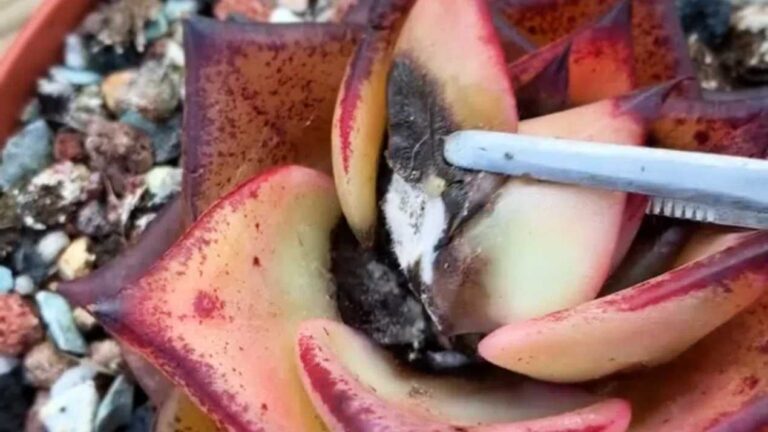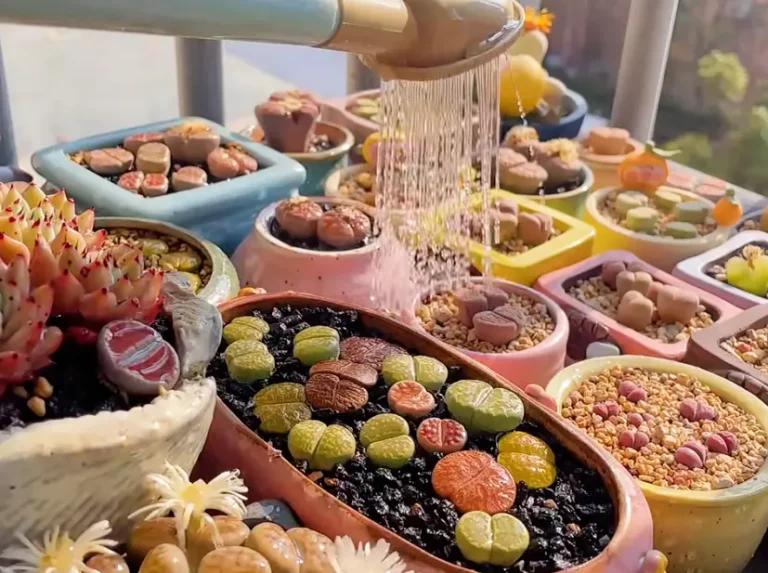When the thermometer drops below freezing, winterizing succulents becomes a top priority for growers around the world. As a succulent enthusiast with five years of experience in the field, I’m going to share seven proven “winterization tips” and reveal four deadly mistakes. Whether you’re in the cold of Scandinavia or the cold and wet of California, these succulent winterization strategies will help your succulents survive the winter. Ready to make your succulents the most beautiful in your circle of friends?
Master the three golden rules of succulent winter care
To achieve a safe winter for succulents, it is important to keep these three core principles in mind. When the temperature is consistently below 5°C, 90% of succulent species will enter a dormant state. At this time, the potting soil humidity control is the first task – check the soil humidity every week, only when the surface 3cm completely dry only need a small amount of water replenishment. Bottom dipping is effective in avoiding waterlogging in the leaf centers, while ensuring that the roots receive the necessary water. It is advisable to do this during sunny afternoons, when water evaporates most quickly, minimizing the risk of frost damage.
A Practical Guide to 7 Safe Winterization Tips
1.Precise water control maintenance method
Watering in winter should follow the principle of “dry rather than wet”. Use the bamboo stick test: insert a bamboo stick into the potting soil for 2 hours and then pull it out, if there is no sign of moisture, then watering can be done. For thumb pots and other small containers, 1-2 times a month micro-watering can be. Pay special attention to Sedum varieties such as Silent Night and Peach Egg, whose leaves have a high water storage capacity, so watering intervals can be extended appropriately.
2.Pre-treatment of leaves against frost
Initiate the dehydration program 2 weeks before the first frost. Gradually extend the watering interval so that the leaves naturally contract to form a protective layer. Observe the state of the leaves: when the bottom leaves appear slightly wrinkled, it means the plant has entered the best frost resistance state. This method is especially suitable for succulents of the genera Staphylococcus and Perissodactyla.
3.Intelligent heating system
Northern growers can build a simple greenhouse: use PVC pipes to build the frame, cover it with a double layer of transparent plastic film, and hang a temperature and humidity meter inside. When the average daily temperature is below -5°C, activate the ceramic heating lamp (keep it more than 30cm away from the plant). In humid areas of the south, it is recommended to use a dehumidifier with a heating pad to maintain air humidity in the 40%-50% range.
- Emergency treatment program for sudden low temperature
When a cold spell strikes, the speed of response of “Succulents Against Frost” determines the survival. If you find that the leaves have become transparent or the wrinkles have worsened, immediately carry out the three-step first aid:
Remove ice crystals from the surface of the plant with a brush
Move to a buffered environment at 10-15°C for 24 hours.
Gradually restore light when the daytime temperature rises.
Measured data show that plants with healthy root systems can survive up to 78% when exposed to -2°C for <4 hours. It is critical to avoid repeated freeze-thaw cycles – this is the main cause of cell rupture.
- Layered insulation construction
Northern growers use the “sandwich method” of protection:
Bottom layer: foam board to insulate the ground from the cold air
Middle layer: non-woven fabric wrapped pots
Top layer: transparent acrylic cover to retain light
In the south, it is recommended to use intelligent temperature control devices, such as Bluetooth temperature and humidity sensors (Govee is recommended), which automatically trigger the heating pad when the temperature drops below 5°C. Note that the heating source needs to be at least 15cm from the bottom of the basin to prevent localized overheating.
- Photosynthesis enhancement strategies
Winter light intensity is only 30% of that in summer and is recommended:
Rotate pots 45 degrees every two weeks to ensure even light exposure.
Use full-spectrum supplemental plant lighting (6500K color temperature is optimal).
White walls reflect up to 30% more effective light
Important: Limit supplemental light to no more than 14 hours per day to mimic the natural photoperiod and avoid plant stress.
- Health status monitoring system
Establish a succulent winter care log to record:
Weekly potting soil moisture content (hygrometer reading)
Percentage of new leaves (below 5% need to adjust the environment)
Root development (gently lift the plant to check the soil grip)
Busting 4 Major Succulent Winter Care Myths
1.The fatal error of “hibernation without ventilation”.
Measurement data shows that the photosynthetic efficiency of succulent plants decreases by 60% when the carbon dioxide concentration exceeds 2,000 ppm in a closed environment. Correct practice: Open the window for 30 minutes at noon every day, and use circulating fans to keep the air flowing. Special tips: Avoid direct cold wind when ventilating, and use transparent plastic film to make a wind barrier.
2.Pest Control Blind Zones
Red spiders survive up to 75% of the time in winter, and they overwinter in webs on the backs of leaves. Monthly wiping the back of leaves with 75% alcohol cotton pads, together with neem oil spray (dilution ratio 1:200), can effectively block the development of insect eggs. Remember to operate in the morning on a sunny day to avoid chemical residues.
- A guide to breaking the watering phobia
Experimental comparisons showed:
Completely waterless group: 42% mortality
Scientific watering group: 9% mortality
Hands-on program:
Ceramic/cement pots: 20ml of warm water (25-30°C) every 3 weeks along the wall of the pot.
Plastic/glazed pots: dip the bottom of the pot for 5 seconds every month.
Golden rule: the ambient temperature needs to be stable >8°C within 48 hours after watering, which can be combined with bamboo charcoal pellet paving to accelerate water evaporation. - Fading Crisis Reversal Program
Discovered through spectral analysis:
Blue spectrum (450nm) promotes anthocyanin synthesis
Red spectrum (660nm) enhances cold-resistant gene expression
Hands-on Suggestion:
Installation of adjustable spectrum LED lights, 6 hours of blue light + 4 hours of red light per day
Spray alginate solution (dilution ratio 1:1000) once a week.
Maintain a day/night temperature difference of 8-10°C (minimum 5°C at night)
Typical case: California growers use this program, Zile and other varieties of winter color development increased by 60%.





